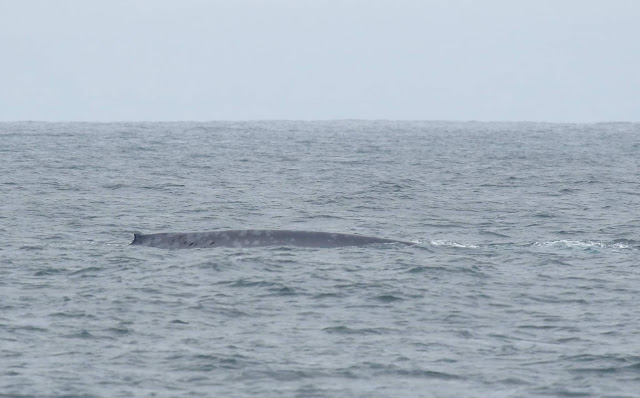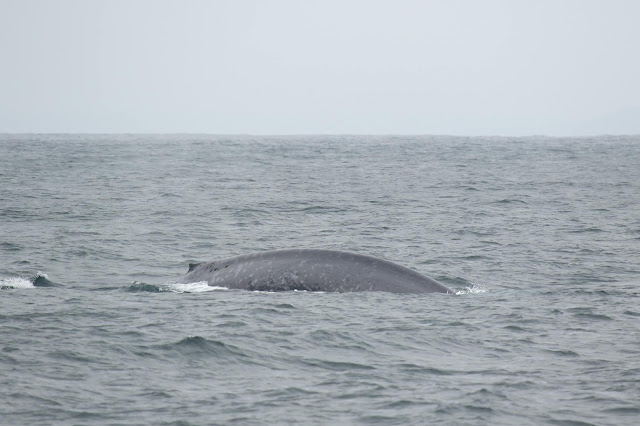The Fin Whale is the second longest whale (up to 80 feet), but first in speed. They move right along!
 |
| Fin Whale. Mylar balloons are a common form of "garbage" at sea. |
 |
| The left ("dark") side of a Fin Whale. |
 |
| The right ("white") side of a Fin Whale. |
When it dives, the flukes rarely come out of the water as they do on many other whales.
Next, the Blue Whale. The largest animal to have ever lived. At 100 feet, they are as long as the longest dinosaur, Argentinosaurus, but twice as heavy. They weigh as much as 40 elephants... or 30 T-Rexes. [The Blue Whale on the BBC page, "Anatomy of a Blue Whale."]
The spout is very tall and thin. By the time you see it, it is too late to photograph it. So you get the following series of views...
 |
Immediate after a blow. Only the blow hole on the top of the head is above water.
The rest of the long head is under water on the right.
|
 |
| Blue Whale swimming to the right. Top of head (right) and upper back visible. |
 |
| The middle half of a Blue Whale facing right. Small back fin on left, head under water on right. Once you see the long straight back and small dorsal triangle, you know it's a Blue Whale. |
 |
Diving Blue Whale. The flukes will follow the back fin as the whale dives to the right.
Forget seeing it again for 20 minutes....
|

No comments:
Post a Comment
I really want to hear from you! I've changed settings (again) in order to try to make commenting easier without opening it up to spammers. Please note, however, that comments to posts older than 14 days will be moderated. Thank you.